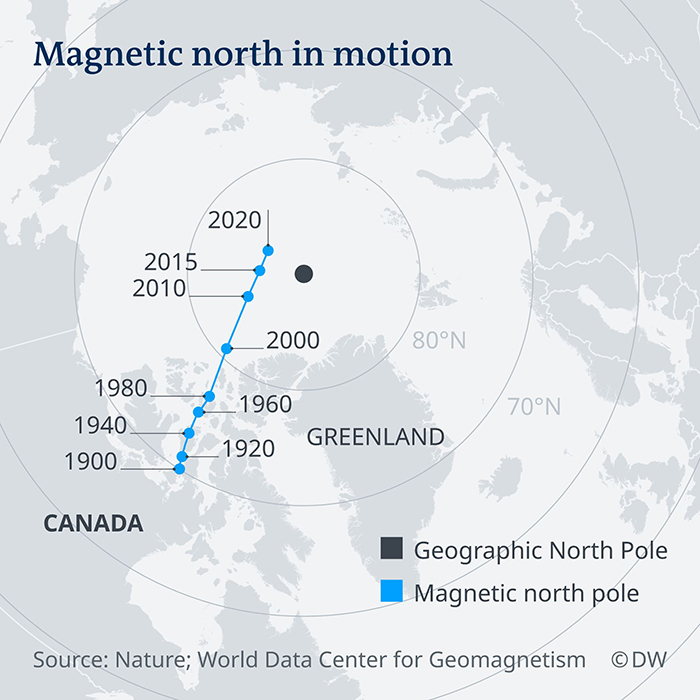Dispatch 25: The wandering magnetic North Pole
Birgit Rogalla
October 4, 2020
Although on this cruise, we didn't make it that near the geographic north pole, we were closer to the magnetic north pole (or at least, where it was in 2000)!
Ever wondered about the pesky compass declination setting and why it changes? Well, that adjustment is necessary to account for the difference between the location of the Earth's geographic north pole and the magnetic north pole.
Liquid iron flowing in Earth’s core generates most of the magnetic field, which varies over time as the deep flows change.
The north magnetic pole has travelled over 2,000 km from the Boothia Peninsula into the Arctic Ocean since 1831 (when it was formally discovered) and it is now on its way towards Siberia.
While the magnetic north pole has always wandered, over the last couple of decades the pace has increased from 10 km in a year historically to 50 km per year by 2000.
As a result, computer models of the Earth's magnetic field need to be adjusted more frequently to account for the drift causing problems for scientists and navigational aids.
So, what caused the increase in pace of movement of the magnetic north? It's a combination of smaller scale variations in the magnetic field and large scale fluid motion.
Over the last few years, a jet underneath Canada has weakened the magnetic field and is thereby shifting the pole towards Siberia.
